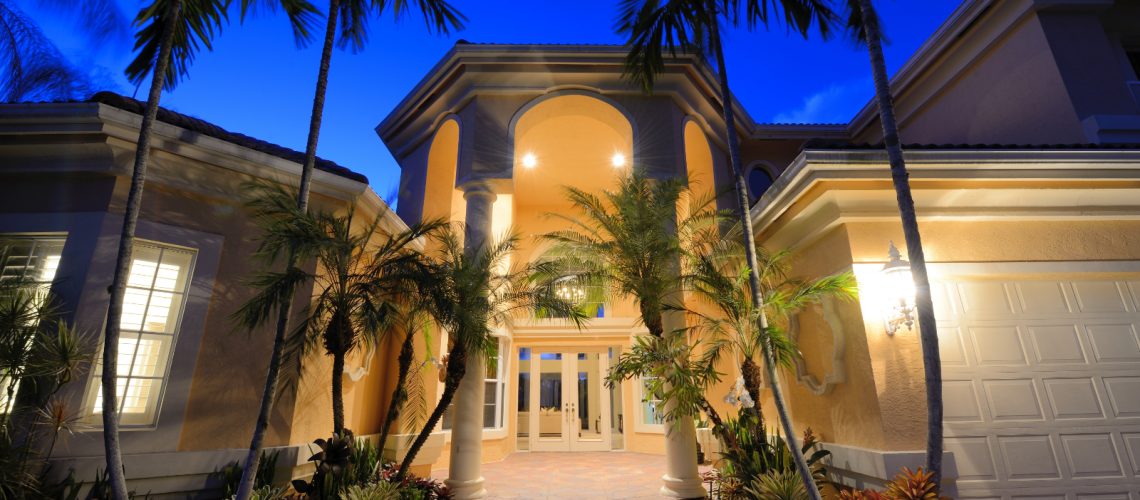Outdoor lighting problems can be frustrating. So let’s take an in-depth look at common outdoor lighting issues and the best solutions for fixing them. Whether it’s dim bulbs, flickering lights, or a burned-out light fixture, you’ll find answers to the most common problems with your exterior lights.
Lights burn out quickly
Fixtures exposed to rain, snow, and wind are prone to premature light bulb burnout. Water and dirt can get inside the fixture, corrode the socket, or cause a bad connection.
Always use wet-rated ‘outdoor’ bulbs for fixtures exposed to the elements. These bulbs have seals in place to protect against moisture and fogging. This helps safeguard the bulb from environmental contaminants that can cause corrosion and premature failure. Wet-rated bulbs also prevent dirt from getting inside the bulb.
There are different types of outdoor bulbs, namely wet-rated or damp-rated. Damp-rated bulbs are certified to withstand some moisture but not direct exposure to water. Suitable outdoor locations for these include covered porches, decks, and lanais. Wet-rated bulbs are suited for fixtures that might encounter rain, dripping water, or standing water, making them suitable for walkways, patios, gazebos, docks, stairs, and garden beds.
Intermittent and flickering lights
Intermittent and flickering lights are typically caused by one of two things. The first may be a faulty connection in the socket, which could potentially cause a fire if not corrected. The second possible cause is a defective light bulb.
A bad bulb can strain the fixture and lead to overheating or burning. If a bulb has been in use for too long, it often produces an inconsistent light level, which can create the appearance of flickering. Always check connections before replacing bulbs.
If you suspect a faulty connection is the source of your problem, shut off power to the fixture at the breaker box and tighten all connections in the socket. If that doesn’t work, you’ll need to replace the light socket with a new one that has a built-in ground wire. You’ll need to ensure that there’s also a ground wire running from the socket to the junction box if there isn’t already one.
Lights don’t turn on and off automatically
If your lights aren’t turning on and off at the times you set, two main things could be causing this problem:
- Your timer might be broken. If so, you’ll need to replace it. Replacing timers on outdoor lighting systems is easy enough – call a professional, and they’ll have it replaced in no time.
- The photocell might be broken. It could also be just covered in dirt or dust that prevents it from functioning correctly. Try cleaning your photocell first before replacing it. You’ll find it mounted either on top of your transformer or next to it, depending on the manufacturer of your transformer or timer.
Lights are on during daylight hours
The most common cause of this issue is an improperly installed photocell. If it’s installed backward or facing the wrong direction, it won’t sense darkness and won’t signal the lights to turn on. Simply remove the photocell and reposition it to face away from direct sunlight to correct this. Pointing a photocell north is generally considered the best practice in the Northern hemisphere. You can also adjust its sensitivity by turning the dial at its base.
Voltage spikes/surges
Lightning strikes can cause voltage surges, but most result from utility failures. Most often, these failures are caused by heavy loads turning on or off, i.e., when many people turn on their air conditioners at the same time.
High voltage or overvoltage occurs when voltage levels rise above normal operating levels. This can be caused by lightning strikes, downed lines, or even utility equipment malfunctions. High voltage can be particularly dangerous because it can damage and shorten the life of electronic equipment and electrical devices.
Common outdoor lighting issues often stem from one of three things: improper installation, lack of maintenance and troubleshooting, and faulty fixtures. That being said, a lighting issue could arise from all three at once. Properly installed systems that haven’t been maintained can experience problems as readily as ones that have just been installed.


